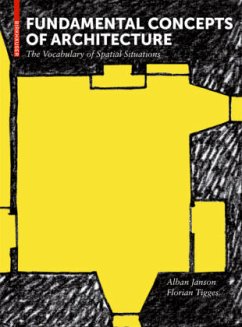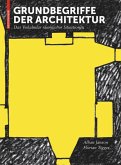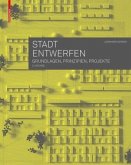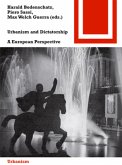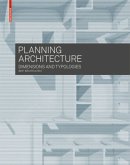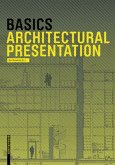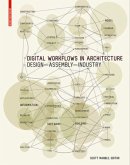Dictionary of architectural experience - the vocabulary of space Architecture is an experience - with the intellect and with all our senses, in motion, and in use. But in order to actually discuss and assess it with relevance, a clarifi cation of terms is essential in order to avoid the vagueness that often prevails when talking about architecture.This dictionary provides a vocabulary that allows the architecture discourse to go beyond the declaration of constructive relationships or the description of architectonic forms in familiar terms like "roof," "base," "wall," and "axis" or "proportion". The point is to describe the experience of architecture: how exactly does it contribute to the experience of a situation? For instance, the staging of an entrance situation, or the layout and visitor routes through a museum.From "context," through "guidance," "readability," "patina," "spatial structure," "symmetry" and "tectonics," to "width" (and "narrowness") or "window," the most important terms in architectural language are explained precisely and in detail.
Wörterbuch der architektonischen Erfahrung Wie wir Räume erleben
Architektur wird erlebt mit Intellekt und mit allen Sinnen, in der Bewegung und im Gebrauch. Doch um darüber tatsächlich zutreffend zu reden und zu urteilen, ist eine Klärung der Begriffe nötig, wenn die Schwammigkeit vermieden werden soll, die auf diesem Gebiet oft vorherrscht.
Dieses Wörterbuch gibt ein Vokabular an die Hand, das ein Sprechen über Architektur jenseits der Erklärung konstruktiver Zusammenhänge oder der Beschreibung architektonischer Formen ermöglicht, unter der Verwendung geläufiger Begriffe wie Dach , Sockel , Wand und Achse oder Proportion . Es geht darum, das Erleben von Architektur zu beschreiben: Wie trägt sie zum Erleben einer Situation bei? Etwa in der Inszenierung einer Eingangssituation oder mit der Wegeführung durch ein Museum.
Von A bis Z, von Ablesbarkeit über Fenster , Kontext , Orientierung , Patina , Raumgefüge , Symmetrie und Tektonik bis hin zu Weite (und Enge ) oder Zentrum werden die wichtigsten Begriffe der Architektursprache differenziert und vielschichtig erklärt.
Präzise Handskizzen des Autors illustrieren den Text und bilden ein visuelles Gegengewicht zur Erläuterung von insgesamt 139 Stichworten.
Hinweis: Dieser Artikel kann nur an eine deutsche Lieferadresse ausgeliefert werden.
Wörterbuch der architektonischen Erfahrung Wie wir Räume erleben
Architektur wird erlebt mit Intellekt und mit allen Sinnen, in der Bewegung und im Gebrauch. Doch um darüber tatsächlich zutreffend zu reden und zu urteilen, ist eine Klärung der Begriffe nötig, wenn die Schwammigkeit vermieden werden soll, die auf diesem Gebiet oft vorherrscht.
Dieses Wörterbuch gibt ein Vokabular an die Hand, das ein Sprechen über Architektur jenseits der Erklärung konstruktiver Zusammenhänge oder der Beschreibung architektonischer Formen ermöglicht, unter der Verwendung geläufiger Begriffe wie Dach , Sockel , Wand und Achse oder Proportion . Es geht darum, das Erleben von Architektur zu beschreiben: Wie trägt sie zum Erleben einer Situation bei? Etwa in der Inszenierung einer Eingangssituation oder mit der Wegeführung durch ein Museum.
Von A bis Z, von Ablesbarkeit über Fenster , Kontext , Orientierung , Patina , Raumgefüge , Symmetrie und Tektonik bis hin zu Weite (und Enge ) oder Zentrum werden die wichtigsten Begriffe der Architektursprache differenziert und vielschichtig erklärt.
Präzise Handskizzen des Autors illustrieren den Text und bilden ein visuelles Gegengewicht zur Erläuterung von insgesamt 139 Stichworten.
Hinweis: Dieser Artikel kann nur an eine deutsche Lieferadresse ausgeliefert werden.

